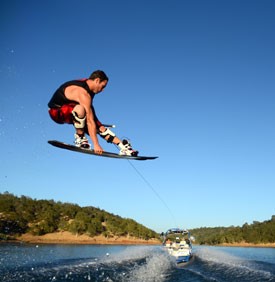 Professional athletes train harder and play their game much more intense than the average weekend warrior. So it’s no surprise that sometimes they get injured. But for an athlete, when an injury arises, the athlete needs to take care of it quickly and efficiently to get back in the game. To do so professional athletes turn to sports medicine specialists who have the knowledge and expertise to help them recover and resume training and competing.
Professional athletes train harder and play their game much more intense than the average weekend warrior. So it’s no surprise that sometimes they get injured. But for an athlete, when an injury arises, the athlete needs to take care of it quickly and efficiently to get back in the game. To do so professional athletes turn to sports medicine specialists who have the knowledge and expertise to help them recover and resume training and competing.
This is true for Sacramento extreme wakeboarder and coach, 32-year old Brodie Chaboya. Brodie is part of the national-level Hyperlite Wakeboards Legion Team. In addition he manages NorCal Hyperlite men’s team and is a coach and owner of Launch Wakeboarding. Brody has wakeboarded all over the world from Sacramento, Washington and Florida to Wake Park World in the Philippines, a wakeboard mecca for wakeboarders of all abilities. He is on the water every day training and practicing his spin and flips or teaching these moves to others.
When Brodie tore his ACL in 2004, he turned to orthopedic surgeon Alan Hirahara, M.D., with Sutter Orthopedic Institute. Dr. Hirahara performed surgery to repair Brodie’s ACL, a ligament crucial to knee stability. He also sent Brodie to a more intense regime of physical therapy, knowing as an athlete Brodie had the strength for this type of therapy, and also knowing Brodie needed to get back to his sports activities as quickly as possible. Brodie says he was back to wakeboarding within five months as opposed to the normal 10 month recuperation period.
Brodie turned to Sutter Orthopedic Institute’s foot and ankle specialist, Masoud (Max) Ghalambor, M.D., in 2010 after injuring his fibula, a narrow bone that extends from the knee to the ankle. Dr. Ghalambor put Brodie in a walking cast for healing. Within four months Brodie was back on the wakeboard, managing the NorCal Hyperlite team and coaching at his wakeboard school.
“You can’t let injuries deter you,” said Brodie. “You’ve got to find a physician who knows how to deal with serious athletes so you can get back into training and competing. Especially if you love your sport like I do. Each time I was able to get back in the water and up my game.”
